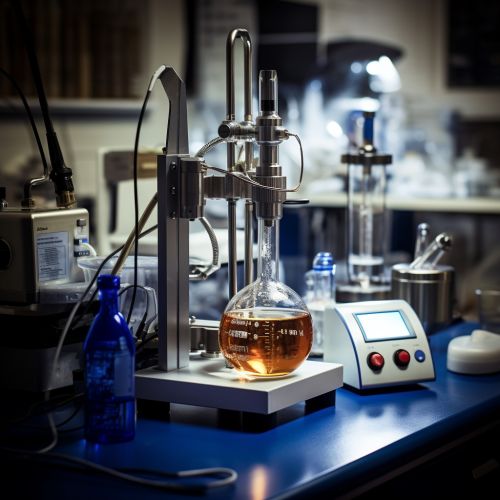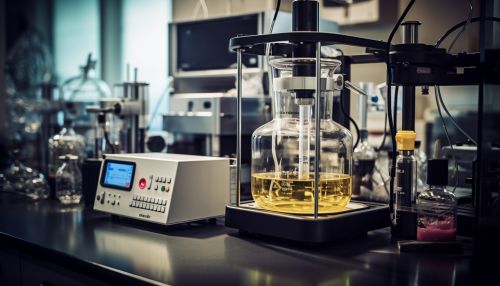Viscometer
Introduction
A Viscometer or viscosimeter is an instrument used to measure the viscosity of a fluid. Viscosity is a fundamental property of fluids, which describes a fluid's resistance to flow. It is a critical parameter in many industrial and scientific applications, such as the design of pipelines, the formulation of pharmaceuticals, and the study of geological phenomena.
History
The concept of viscosity dates back to ancient times, but the first scientific attempts to measure it were made in the 19th century. The French physicist Jean Louis Marie Poiseuille developed one of the earliest viscometers in 1840, which was based on the principle of capillary flow. Later, in 1881, the German physicist Oswald Heimrich Wilhelm Ostwald designed a viscometer that is still widely used today, known as the Ostwald viscometer.
Types of Viscometers
There are several types of viscometers, each with its own unique method for measuring viscosity.
Capillary Viscometers
Capillary viscometers, also known as U-tube viscometers, are the simplest and most common type of viscometer. They consist of a U-shaped glass tube, which is filled with the fluid to be tested. The time it takes for the fluid to flow from one end of the tube to the other is measured, and this time is used to calculate the fluid's viscosity.
Rotational Viscometers
Rotational viscometers measure the torque required to rotate a disk or cylinder in a fluid. The greater the torque required, the higher the viscosity of the fluid. Rotational viscometers are widely used in the paint and coatings industry, where they are used to measure the viscosity of paints and varnishes.
Falling Sphere Viscometers
In a falling sphere viscometer, a sphere is dropped into a fluid, and the time it takes for the sphere to fall a certain distance is measured. The viscosity of the fluid can be calculated from the falling time and the size and density of the sphere.
Vibrational Viscometers
Vibrational viscometers measure the damping of a vibrating element in a fluid. The greater the damping, the higher the viscosity of the fluid. Vibrational viscometers are often used in the food and beverage industry, where they are used to measure the viscosity of sauces, syrups, and other liquid foods.
Applications
Viscometers are used in a wide range of industries and scientific fields. Some of the most common applications include:
- Pharmaceuticals: In the pharmaceutical industry, viscometers are used to measure the viscosity of creams, ointments, and other topical medications. This information is critical for ensuring that these products have the right consistency and spreadability.
- Petroleum: In the petroleum industry, viscometers are used to measure the viscosity of crude oil and other petroleum products. This information is important for pipeline design and for predicting the behavior of oil in reservoirs.
- Food and Beverage: In the food and beverage industry, viscometers are used to measure the viscosity of sauces, syrups, and other liquid foods. This information is important for quality control and for predicting the behavior of these products during processing and storage.
- Geological Studies: In geological studies, viscometers are used to measure the viscosity of magma and other geological fluids. This information is critical for understanding volcanic eruptions and other geological phenomena.


See Also
- Rheometer - Fluid dynamics - Newtonian fluid - Non-Newtonian fluid
